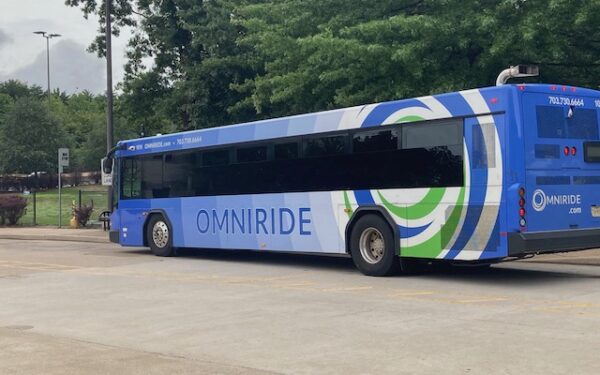

The is experiencing a surge in ridership, with a 36% increase in February compared to January, despite one fewer service day. Early data from March indicates the trend is continuing, with ridership levels already outpacing previous weeks.
The boost in ridership was discussed at the March 6 Potomac and Rappahannock Transportation Commission (PRTC) meeting and has been particularly strong on express routes, following a pattern seen across the region. Southern commuter routes, including Route 611 (Front Royal-Gainesville-Washington), Route 612 (Warrenton-Gainesville-Pentagon-L’Enfant Plaza-Navy Yard), and Route 622 (Haymarket-Rosslyn/Ballston), recorded their highest monthly ridership total yet, surpassing 11,000 trips combined.
However, this increased demand has created new challenges for commuters and transit agencies, particularly in parking availability at transit hubs.
With more passengers relying on OmniRide’s commuter services, the University Boulevard commuter lot has seen a significant increase in usage. Routes 611, 612, and 622 from the lot now carry over 1,700 passengers daily.
The 2,500-space parking facility was reported to be around 80% full even during off-peak hours, raising concerns about capacity as ridership continues to climb. Ongoing construction projects, including those related to data centers, have further reduced available parking spaces, making it harder for commuters to find spots.
As the demand for transit services grows, illegal parking has become an issue at the University Boulevard commuter lot. Law enforcement agencies, including Transurban Police and VDOT officials, have been involved in addressing parking violations.
The matter was discussed at a recent Sudley Road corridor meeting, where local authorities and transit agencies acknowledged the challenges and began exploring potential solutions. Despite the sharp rise in ridership, OmniRide faces financial roadblocks that prevent service expansion. The motor fuels tax, a key revenue source for transit services college from drivers who purchase gasoline, has remained flat, leaving little room to add trips even as demand increases.
Many commuters have shifted to bus routes operated by OmniRide and funded by the state, which helps ease congestion but does not contribute to OmniRide’s locally funded routes. As a result, high-demand routes such as Lake Ridge, Dale City, and Route 234 are operating at full capacity, but officials say there is no funding available to increase frequency.
Recognizing the urgent need for relief, PRTC plans to add more trips on the Gainesville-Pentagon and Manassas-Washington routes in April, leveraging existing state and federal funding sources. However, officials caution that these additions do not fully address the strain on local routes.
Transit leaders warn that ridership will not generate enough revenue to expand services significantly if ridership returns to pre-pandemic levels. Officials are now exploring alternative funding options, including potential local funding initiatives, to help bridge the gap.